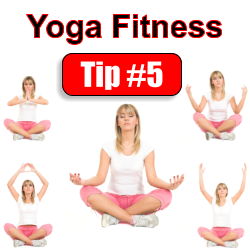Guide to the Yoga Sun Salutation and Corpse Pose
Surya Namaskara, the original Sun Salutation name, is one of the most popular yoga styles in the Western world. It derives its popularity from the flexibility of its three routines – A, B and C – which can range from poses suitable for a beginner to the more advanced.
Due to the simplicity of the Sun Salutation postures, called asanas, many people use this style of yoga when learning the breathing routines of Hatha, while many instructors use some Sun Salutation Poses as a warm-up to other yoga routines.
Differences Between the Sun Salutation Routines
Many of the poses are the same in each of the Sun Salutations routines. Here are the poses included in Sun A:
- Standing Mountain Pose
- Upward Salute
- Standing Forward Fold
- Half Standing Forward Fold
- Four-Limbed Staff Pose
- Upward-Facing Dog Pose
- Downward-Facing Dog Pose
- Half Standing Forward Fold
- Standing Forward Fold
- Mountain Pose
Sun B however generally substitutes the Warrior and Chair poses for the Upward Salute, whereas Sun C includes the Plank, Lunge and Cobra postures in its routine instead of the Four-Limbed Staff Pose.
Each of the routines are laid out in a sequence that allows the student to move from one pose to the next with minimal movement or lost time. Breathe in on the portion of the pose involving a stretch or extend; breathe out on the portion where you bend or contract.
Back to the Basics
In its basic form, its poses concentrate on stretching the whole body along with deep breathing to warm up core muscles. Warmed muscles are more pliable and flexible, thus reacting better to the moves within the postures. This also reduces the risk of injuring a muscle by stretching further than you could if not warmed. And because each pose can be done in a variety of ways, advanced students can do variations of a pose for more stretching and strength building or even a different routine.
Since the normal Sun Salutation poses are very basic, they are a great routine to do by themselves or to incorporate more advanced poses into them. For example, the Triangle Pose can be added to the Lunge to expand the flexibility of the hips, shoulders and abdominal core. The more advanced Standing Splits pose can follow the Mountain pose for an even deeper workout.
Unlike many other types of yoga, Sun Salutation can be practiced every day. Do one of the Sun routines daily and soon you’ll notice a difference both mentally and physically.
A Guide to the Yoga Corpse Pose
The Corpse Pose is usually the final pose in a yoga class. Also known as the Final Relaxation Pose, its purpose is to take you deep inside yourself through total relaxation and concentration. Because this pose is more mental than physical, it is often the hardest pose for beginner yogis to achieve.
In this pose, you lie completely still and concentrate on the awareness of your deepest and innermost state of consciousness, thus releasing the emotions and ideas that unconsciously guide your life – sometimes down the wrong path. It is here in this state that you find your true self.
Corpse Pose Benefits
Besides the physical benefits of the Corpse Pose, such as a decrease in heart rate, muscle tension and metabolic rate; lower blood pressure; a slowed rate of breathing, you’ll also experience a deeper calmness between your mind, body and soul. It is this awareness between all three that helps you focus, stay calm and experience less stress throughout the rest of your chaotic and hectic day. And we all know that having less stress, both mentally and physically has many health benefits of its own.
Doing the Corpse Pose
Start by lying on your back with your legs straight and arms at your sides with your hands about six inches away from your body, palms up. Let your feet naturally rotate outward. And close your eyes.
- Breathe in and out naturally.
- Relax and allow your body to feel as if it were sinking into the floor.
- Starting at the soles of your feet and working up to the top of your head, concentrate on releasing every part of your body.
- When you get to your head, concentrate on relaxing your face; let your eyes fall deep in their sockets. Peace and silence should permeate throughout your mind, body, and soul.
- Dedicate five minutes to this pose for each 30 minutes of yoga practice.
- To end the pose, begin to deepen your breath. Slowly, and through gentle movement, bring the physical awareness back to your body, by starting at the far end of your extremities and wiggling your fingers and toes. Now roll to your left or right side; lay there and rest for a moment. When ready, deeply inhale while bringing yourself up to a comfortable seated position.
- Finish bringing yourself back to the present and carry the peace and stillness derived from the pose with you throughout the rest of your day.
Start with Sun Salutation – End with the Corpse Pose
If you have to leave class early, be sure to warm-up with the Sun Salutation, forgo doing another pose or two if necessary, but do not forgo doing the Corpse Pose because no yoga practice is complete without this final relaxation pose.
